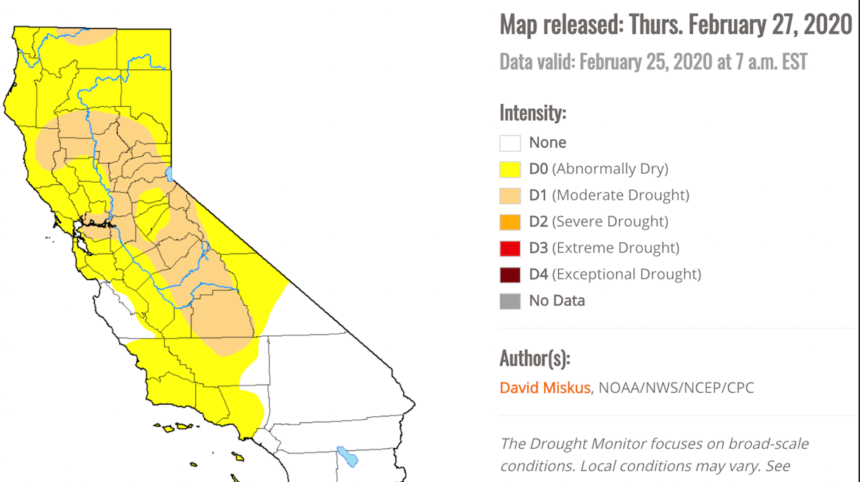New drought report shows Central Coast, most of CA is ‘abnormally dry’

SANTA MARIA, Calif. --The latest U.S Drought Monitor shows most of California is abnormally dry, with part of the state considered to be in a moderate drought.
It's no secret the Golden State is having one of its driest Februaries in years, bringing up concerns about fire danger this summer as there is only one more month of winter.
On the Central Coast, reservoir levels are steady. The San Luis Obispo County Public Works department says there are no immediate concerns.
In Santa Maria, officials are taking a similar approach, but they say they've been on water conservation mode since the last drought.
“The City of Santa Maria has a diverse water supply consisting of groundwater, as well as imported state water," said City spokesman Mark van de Kamp. "We are following the dry situation across the state through the State Department of Water Resources closely. We have had a number of conservation measures in place that the City Council adopted, actually for six years now.”
Some of those measures include no outdoor irrigation between 12 p.m. and 4 p.m., no use of hoses without shut-off nozzles to wash cars, and no use of potable water on driveways or sidewalks.
Van de Kamp says a city specialist can also help residents with water conservation efforts.
“Our water conservation specialist, by appointment, will come out to your residence and do a free water audit, internal and external of your property, to identify spots where you might wanna get low flow fixtures, or you could potentially switch to drip irrigation," he said.
On Thursday, the Department of Water Resources also conducted its third snow survey of the year at the Phillips Station snow course. This measures the amount of water in the snowpack, which provides a more accurate forecast of spring runoff.
“We recorded a snow depth of 29 inches and a snow water content of 11.5 inches. That results in a 47% of an average for March," said Sean de Guzman, chief of DWR’s Snow Surveys and Water Supply Forecasting Section.
“Our February rain and snow were quite disappointing and we didn't quite get the results we had hoped for. We'll most likely end this water year with below average, we just don't know how far below. This February will actually go down as the driest February in the Northern Sierra on record, dating back to a hundred years to 1921," De Guzman said.
While February has been very dry, it’s not unprecedented for California to be in this position. In 2018, after a dry start, March storms made up much of the deficit and brought California closer to normal that year.
